Stewart McPherson, the author of the new two-volume set Pitcher Plants of the Old World and the best-selling Lost Worlds of the Guiana Highlands, took time out from his international adventures to answer a few questions for NHBS. We hope you enjoy reading more about Stewart’s experiences in the field!
What awakened your passion for pitcher plants and other carnivorous plants?
While at university, I took part in several rainforest conservation programmes in countries across Central America and Southeast Asia. One of these projects involved an eight week stay in the Maliau Basin in Sarawak, Malaysian Borneo, and this experience gave me the opportunity to observe Nepenthes in the wild for the first time. To my amazement, in the very first pitcher of a N. hirsuta plant which I examined, I found the body of a dead mouse, and from this experience, my fascination with carnivorous plants was fixed.
What variations exist between pitcher plants in the Old World and the New World?
In the Old World there are two genera (families) of Pitcher Plants – Nepenthes and Cephalotus. Nepenthes occur across tropical areas of the western hemisphere, mainly in Southeast Asia, and consists of 120 species, including the largest of all carnivorous plant species which produce giant “pitcher” traps larger than 3 litres in volume that occasionally trap prey as big as rats. Each species of Nepenthes differs in the shape, size and colouration of its pitchers – often these traps are bizarre and extremely beautiful. Cephalotus, on the other hand, grows only in S. E. Australia and produces small, purple pitchers the size of a thimble which are specialised towards the trapping of small prey, namely ants.Â
There are five genera of pitcher plants in the New World (Americas). These include the Sarracenia of North America – which mainly produce striking, tall, but narrow, trumpet shaped pitchers that grow in marshy grasslands. Also in North America, there grows Darlingtonia – the cobra lily – which produces bizarre, cobra-shaped traps. Both the Sarracenia and Darlingtonia grow in temperate areas, so experience cold conditions (often frost and snow) in winter. So these plants can often be cultivated outdoors in England. In addition to these, there are three pitcher plant groups from the tropical Americas – the ancient Heliamphora which produce stout, cup shaped traps, and grow atop of the tepuis – ancient “lost-world” plateaus scattered across southern Venezuela, as well as representatives from two groups of tank bromeliads (Brocchinia and Catopsis).
All seven genera of pitcher plants are extraordinary – each with remarkable adaptations to kill insects and other small animals. They are also often very beautiful and colourful, and all seven groups are grown by increasing numbers of horticulturists around the world.
What has been your greatest discovery?
While undertaking research for Pitcher Plants of the Old World, I climbed a remote and little explored peak in Central Palawan, in the Philippines. After a difficult climb, on the top of this mountain, two friends and I discovered a spectacular, giant, new species of pitcher plant. It is one of the largest of all known pitcher plant species, producing traps over 30 cm long, and beautifully coloured with green, yellow, red and purple. I had been lucky to find several other new species on different mountains previously – but this was the most interesting by far, because it is so massive, colourful and beautiful. We decided to name this new plant after Sir David Attenborough – and so it is now formally been described Nepenthes attenboroughii. Both a description of this new plant, and an account of how it was discovered, are presented in Pitcher Plants of the Old World, Volume Two.
Tell us about some of the challenges that you’ve experienced in the field.
I prepared Pitcher Plants of the Old World in response to the lack of available information on dozens of species of Nepenthes. Since many species of Nepenthes are not in cultivation, and also because there is often confusion concerning those that are, I resolved to study and photograph each species of Nepenthes and Cephalotus in the wild, in order to document each adequately. After graduating from university in 2006 at the age of 23, I began three years of intense research focusing on Nepenthes and Cephalotus, and spent a cumulative total of eighteen months in the field. Over the last three years, I climbed over one hundred mountains across Southeast Asia in search of species of Nepenthes. Many of these journeys were relatively simple, lasting just a few days or less. Others required more extensive effort, and in a few cases, I spent more than one week to find a single Nepenthes taxon.
This endeavour has been a journey in every sense of the word. It has taken me to Nepenthes habitats in mine fields, various rebel and guerilla conflict zones, through prison grounds guided by murderers, to the slopes of active, smoldering volcanoes. I travelled through intense storms, floods, and repeatedly to the habitat of wild tigers, elephants and always the ubiquitous leeches of the forests of Southeast Asia. Several times I had to resort to drastic measures, for example when running short on food, I was forced to eat wild frogs in Kalimantan and fruit bats in Sulawesi. Often the journey has been physically difficult, and a few times I had to accept failure and return disheartened from difficult efforts to climb mountains that could not be summited. Equally on a few occasions, after spending days climbing peaks, sometimes no pitcher plants were to be found. The great botanist Carolus Linnaeus named Nepenthes after a spirit that banishes all ills and grief, and as he prophetically suggested 250 years ago, after every success in finding remarkable Nepenthes species, all thoughts of past difficulties and hardships are replaced with amazement and wonder, and so it has been for me. This search has given me a wealth of memories from the most beautiful corners of the world which I will always treasure. From countless beautiful rainforest scenes, to the summits of many misty, tropical mountains, and even to the cliffs of remote coral islands. I had the privilege of venturing to some of the enduringly least explored corners of Southeast Asia, through traditional villages to remote mountain peaks to encounter four new species of Nepenthes. However, all journeys inevitably end, and this one is now complete shortly before my 26th birthday. Undertaking this work has been both the most difficult, but equally the most enjoyable experience of my life, and I sincerely hope that you might you enjoy the result.
What are the most pressing conservation concerns affecting pitcher plants in the wild?
Several species of Nepenthes are either on the verge of extinction in the wild, and one may already have been completely wiped out. Because dozens of species of Nepenthes pitcher plants occur only on one mountain and no where else in the world, and since in a few cases, the total wild population may be just a few hundred plants, they are at serious risk of being poached, overcollected or having their habitat destroyed. This risk is made even greater because of the value of these plants – horticultural interest is such that even seedlings of the most rare and sought after species are often worth hundreds of pounds, dollars or euros.
In general, poaching represents the biggest threat overall to most pitcher plant species, but habitat loss, mining, forest fires and a plethora of other factors are also real risks to these incredible plants. Realistically, it is highly likely that several species may become extinct over the next few years in the wild. Which is why it is important for horticulturists, botanic gardens and conservation organisations to work together and maintain collections of different strains of the rarest species to prevent complete loss. Perhaps one day, the rarest species may be reintroduced back into the world – and for this hope – the horticulture represents the only means of survival for several species for the time being. Documenting both the status of the various pitcher plant species, and the various threats and practical means of conservation are fundamental elements in the books that I have written.
Is there an increasing interest in pitcher plants outside of academia?
Definitely. There are dozens of specialist societies, horticultural nurseries, online forums and thousands of websites – not just in Europe and north America, but increasingly across Asia and Australia. More and more horticulturists are becoming fascinated by these alluring, bizarre, but beautiful plants of prey.
What would you recommend to people interested in seeing pitcher plants in their natural habitat?
The most spectacular and fun place to see pitcher plants in the wild is Mount Kinabalu in Sabah, Borneo. This mountain is great to climb. It is located in the Kinabalu National Park – which is incredibly organised and a model for sustainable management of wilderness areas. Tours are easy to book (but often sell out during busy seasons). The climb takes just one day each way, and you reach the top of the highest peak in Southeast Asia. On the way, you see several spectacular species of pitcher plants. But – a little known secret – is that when you descend – ask your guide (before you start your climb) to go down via the Mesilau centre. This is a beautiful resort – but right by the resort, there is a short trail which all the guides know. It is called the nepenthes rajah trail, and along this short walk, you see the largest of all pitcher plant species – N. rajah – which produces pitchers that trap prey as large as rats! It is incredibly easy to see (just a 10 minute walk from the resort) and breathtakingly beautiful. The plants are strictly protected and well managed, and the revenue from your visit helps maintain the area.
Tell us about your best-selling book, Lost Worlds of the Guiana Highlands. What drew you to publish a book about this subject? What are the logistics involved in visiting such an isolated place? Â
The book is about the tepuis – the immense, sandstone plateaus of Southern Venezuela and borderlands of northern Brazil and western Guyana. These mountains are simply the most extraordinary and breathtaking places on the planet – each is encircled by towering sandstone cliffs up to 1,000 meters tall. The summits of each of these so called “lost worlds” has remained variably isolated for millions of years – and today they are home to many ancient plants and animals that occur no where else in South America. Indeed, some of the animals on top of these great plateaus are most similar to extinct fossils. The story of how these tablelands were discovered and explored inspired Arthur Conan Doyle’s adventure classic “The Lost World”.
I had always been interested in these mysterious mountains because they are the home of the Heliamphora pitcher plants (see above) which I had grown since a child. I was actually undertaking a conservation project whilst in Belize, and after five months working in the jungle and teaching in a remote village, I returned back to a seaside village for a break, and after diving one day, found a copy of a May 1989 National Geographic magazine including an absolutely spectacular article on these mountains. At the time, there were no detailed books about these mountains, how they had formed, how they were discovered, or the weird wildlife of their summits. So at that moment, I decided to write a book on the subject.
Visiting the tepuis is not easy. Most can be accessed only by helicopter. Only four tepuis can be climbed – only one of which – Mount Roraima – is regularily visited. Mount Roraima is a tourist attraction and many people climb up it each year. I had to visit 20 or so of these tepuis to undertake the research I needed to finish my book, which took 6 months of traveling. These mountains take my breath away – they are still (in my opinion) the most incredible and spectacular places on earth.
Of the many places you’ve visited in your travels, which ones stand out in your mind? Why?
Aside from the tepuis – I think the Philippines. I spent 14 weeks researching the pitcher plants of this beautiful country. The people are the friendliest, kindest and in many ways the most innocent and warm I have met. The landscape is extraordinarily varied and beautiful, as is the wildlife. However this is a country with a turbulent past that has seen more than its fair share of troubles. Partly due to this history and political instability, the wildlife – especially the plant life – remains little documented. The pitcher plants of the Philippines have hardly been studied. My friend and I found several new species there, as well as spotting one species of pitcher plant that had not been seen for more than a hundred years. Without a doubt, there are more new species of pitcher plants (and of course other plants and animals) awaiting discovery in the Philippines. The Philippines is also one of the most interesting places I have ever been to; from chickens and goats on buses, to local “delicacies” such as unhatched eggs, to jeepneys – perhaps the strangest type of vehicle ever built – you really can’t guess what each day will hold.
Browse the two-volume set Pitcher Plants of the Old World
Browse the best-selling Lost Worlds of the Guiana Highlands

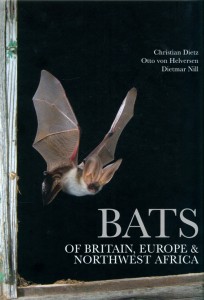
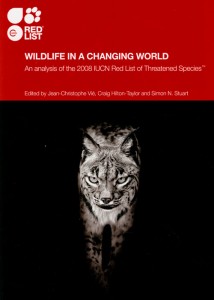
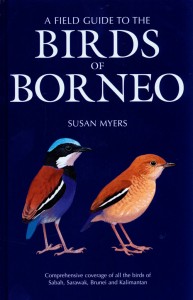
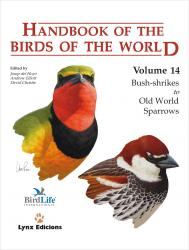
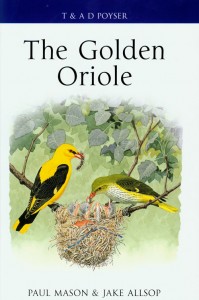



![174837[2]](https://blog.nhbs.com/wp-content/uploads/2009/08/180651-211x300.jpg)
![174837[2]](https://blog.nhbs.com/wp-content/uploads/2009/08/180652-209x300.jpg)
![174837[2]](https://www.nhbs.com/images/jackets_resizer/17/179815.jpg)
![181422[2]](https://blog.nhbs.com/wp-content/uploads/2009/08/179850-202x300.jpg)